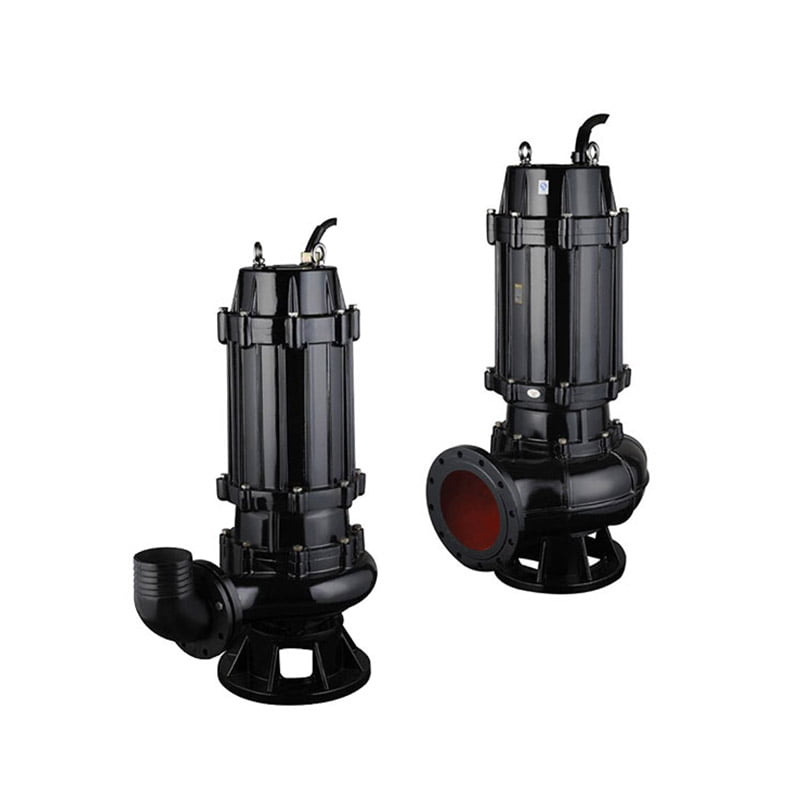Submersible pumps are widely used in drainage, irrigation, industrial circulation and other fields. The selection of their models, specifications and parameters is crucial to the performance and use of the equipment. This article will analyze the models, specifications and parameters of submersible pumps in detail to help readers better understand and choose submersible pumps that suit them.

Interpretation of Submersible Pump Models, Specifications and Parameters
The models, specifications and parameters of submersible pumps usually include the following aspects:
The model of a submersible pump usually consists of a string of letters and numbers, which represent the different characteristics and specifications of the pump. For example, 65WQ15-7-0.75, this is a WQ series submersible pump, “65” represents the outlet diameter, “WQ” refers to the name of the model, “15” represents the flow rate of the pump, “7” represents the head of the pump, and “0.75” represents the motor power used by the pump. These basic characteristics can be found in the parameter manual.
Flow rate: Flow rate is the volume of liquid delivered by a submersible pump per unit time, usually expressed in cubic meters per hour (m³/h) or liters per second (L/s). The size of the flow determines the working efficiency and processing capacity of the pump. The selection needs to be determined according to actual needs and pipeline systems.
Lift: Lift refers to the maximum vertical height that a submersible pump can pump water from a low place to a high place, usually in meters (m). The size of the lift depends on factors such as the structure and power of the pump and the properties of the liquid. When selecting, the conveying distance and height difference need to be considered.
Power: Power is the power source of the submersible pump, usually in kilowatts (kW). The size of the power determines the pumping capacity and efficiency of the pump. Choose the appropriate power according to the use occasion and the requirements of flow and lift.
Voltage and frequency: Voltage and frequency are the working parameters of the submersible pump motor, which respectively indicate the voltage value and power supply frequency required by the motor. In China, the commonly used voltage is 220V or 380V, and the frequency is 50Hz. Choosing the right voltage and frequency can ensure the normal operation of the submersible pump and avoid damage.
Speed: Speed refers to the number of revolutions per minute of the submersible pump motor, usually expressed in revolutions per minute (r/min). The speed directly affects the output flow and head of the pump, and needs to be adjusted according to the model and specifications of the pump.
Caliber: Caliber refers to the diameter of the inlet and outlet of the submersible pump, usually in millimeters (mm). The size of the caliber determines the flow rate that the pump can handle, and needs to be selected according to the actual pipeline system and flow requirements.
How to Choose a Suitable Submersible Pump
When choosing a submersible pump, you need to comprehensively consider the above parameters based on actual needs and working environment. Here are some suggestions:
Clear use requirements: First, it is necessary to clarify the use occasion, flow requirements, head requirements, etc. of the submersible pump. For example, a submersible pump used for farmland irrigation may require a larger flow and a lower head; while a submersible pump used in an industrial circulation system may require a higher head and a stable flow.
Consider the working environment: The working environment of the submersible pump is also a factor that needs to be considered when choosing. For example, water quality, water temperature, sediment content, etc. may affect the performance of the submersible pump. When choosing, you should try to choose a submersible pump that can adapt to the requirements of the working environment.
Pay attention to brand and quality: As an important industrial equipment, the brand and quality of the submersible pump are directly related to the use effect and service life. Therefore, when choosing, you should give priority to products with well-known brands and reliable quality to ensure the stability and safety of the equipment.
Consider maintenance and care: Submersible pumps require regular maintenance and care during use. When choosing, you can pay attention to the ease of maintenance and maintenance cost of the product so that it can be managed and maintained more conveniently during use.
Of course, you can also inform Besqo Marine of your needs, and we will find a submersible pump that meets your needs, is reasonably priced, and has quality assurance, saving you many problems.
The model specifications and parameters of the submersible pump are an important basis for selecting and using the submersible pump. By understanding and understanding the meaning and selection methods of these parameters, we can better choose a submersible pump that suits us and ensure that it can perform at its best performance and effect during use. At the same time, during use, we also need to pay attention to regular maintenance and care of the submersible pump to extend its service life and ensure its stable operation.
With the continuous advancement of science and technology and the rapid development of industry, the technology and performance of submersible pumps are also constantly improving. In the future, we can expect the emergence of more efficient, intelligent, and environmentally friendly submersible pump products to bring more convenience and benefits to our lives and work.



